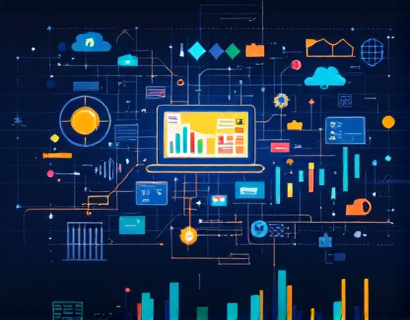Transformative Software Solutions for Streamlined Educational Management and Enhanced Learning Outcomes
In the rapidly evolving landscape of education, institutions are increasingly turning to advanced software solutions to transform their administrative processes, enhance communication, and optimize resource management. These transformative tools are designed to empower educational administrators, allowing them to focus more on delivering exceptional education and fostering a collaborative learning environment. By leveraging cutting-edge technology, schools and universities can streamline their operations, improve efficiency, and ultimately enhance the overall educational experience for students and staff alike.
Streamlining Administrative Tasks
The administrative burden on educational institutions is significant, encompassing everything from student enrollment and attendance tracking to financial management and report generation. Traditional methods often involve manual data entry, paper-based processes, and disjointed communication channels, leading to inefficiencies and potential errors. Advanced software solutions address these challenges by automating routine tasks, centralizing data, and providing intuitive interfaces for seamless operation.
For instance, student information systems (SIS) integrate various aspects of student data, such as demographics, academic records, and attendance, into a single, accessible platform. This not only reduces the time spent on data management but also minimizes the risk of errors. Similarly, learning management systems (LMS) offer comprehensive tools for course management, content delivery, and assessment, all in one place. These systems enable instructors to create, organize, and deliver course materials efficiently, while also facilitating student engagement through interactive features.
Enhancing Communication
Effective communication is crucial in any educational setting, yet it often poses significant challenges. With the implementation of advanced software solutions, institutions can bridge the communication gap between administrators, teachers, students, and parents. Communication platforms integrated within these solutions provide a centralized hub for sharing information, announcements, and updates.
Email and notification systems ensure that important messages reach the right individuals promptly, reducing the reliance on outdated methods like printed newsletters or phone calls. Discussion forums and chat features within LMS platforms foster a sense of community, allowing students and teachers to collaborate and engage in real-time. This enhanced communication not only improves the flow of information but also builds stronger relationships within the educational community.
Optimizing Resource Management
Resource management is another critical area where transformative software solutions can make a significant impact. Educational institutions often face constraints in terms of budget, personnel, and physical resources. Advanced software tools help optimize these resources by providing detailed analytics and insights.
For example, predictive analytics can forecast student enrollment trends, enabling institutions to make informed decisions about capacity planning and resource allocation. Financial management software offers real-time budget tracking and reporting, helping administrators to identify areas for cost savings and ensure financial stability. Asset management systems track the usage and maintenance of physical resources, such as classrooms and equipment, ensuring they are utilized efficiently and maintained properly.
Fostering a Collaborative Learning Environment
A collaborative learning environment is essential for enhancing student engagement and achieving better learning outcomes. Software solutions designed for educational institutions play a pivotal role in fostering collaboration by providing tools that facilitate teamwork and knowledge sharing.
Project management tools within LMS platforms enable students to work together on group assignments, assign roles, set deadlines, and track progress. Peer review and feedback mechanisms encourage students to engage critically with each other's work, promoting a deeper understanding of the subject matter. Additionally, virtual collaboration spaces, such as virtual whiteboards and shared document editors, allow students and teachers to collaborate in real-time, regardless of their physical location.
Personalized Learning Experiences
One of the most transformative aspects of modern educational software is the ability to deliver personalized learning experiences. Adaptive learning technologies use data analytics to tailor educational content to the individual needs and learning styles of each student. This personalized approach ensures that students receive the support they need to succeed, whether they require additional help in certain areas or more challenging material to keep them engaged.
Intelligent tutoring systems provide instant feedback and guidance, helping students to master concepts at their own pace. Learning analytics dashboards offer insights into student performance, enabling teachers to identify areas where students may be struggling and intervene proactively. This data-driven approach to education not only improves learning outcomes but also empowers students to take ownership of their educational journey.
Supporting Teacher Professional Development
Teachers are the cornerstone of the educational process, and their professional development is crucial for maintaining high-quality instruction. Advanced software solutions can support teacher professional growth by providing access to a wealth of resources and collaborative opportunities.
Online professional development platforms offer courses and workshops on the latest teaching methodologies, technology integration, and curriculum design. These platforms often include features for tracking progress, earning certificates, and connecting with peers for support. Additionally, data from LMS platforms can inform professional development initiatives by highlighting areas where teachers may need additional training or resources.
Ensuring Data Security and Privacy
As educational institutions adopt more software solutions, ensuring the security and privacy of sensitive data becomes paramount. Reputable software providers implement robust security measures, including encryption, access controls, and regular audits, to protect against data breaches and unauthorized access. Compliance with regulations such as the Family Educational Rights and Privacy Act (FERPA) in the United States is essential to maintain trust and protect student information.
Transparent privacy policies and clear communication about data usage help build confidence among stakeholders. Institutions should also provide training and resources to staff and students on best practices for data security, further reinforcing the commitment to protecting sensitive information.
Conclusion
The integration of transformative software solutions in educational institutions represents a significant step forward in modernizing administrative processes, enhancing communication, and optimizing resource management. By leveraging these advanced tools, schools and universities can create a more efficient, collaborative, and personalized learning environment. As technology continues to evolve, the potential for innovation in education remains vast, offering exciting opportunities for institutions to transform and thrive in the digital age.










































